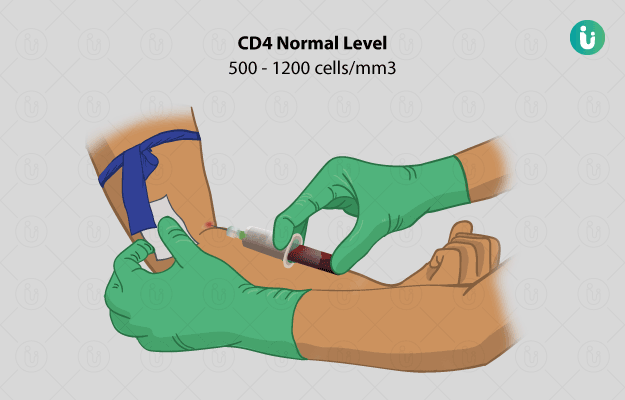What is a Cluster of Differentiation 4 test?
A cluster of differentiation 4 (CD4) test is used to determine the number of CD4+ cells in body. CD4+ cells are one of the many cells that are a part of the immune system. Immunity is divided into two types:
- Innate immunity: It is the immunity that an individual is born with.
- Adaptive immunity: It develops after exposure to certain disease-causing agents called antigens
The cells that carry out adaptive immunity are of two types:
- T lymphocyte cells, which are generated in the thymus gland located in the neck region
- B lymphocyte cells, which are generated in the bone marrow.
CD4+ cells are a type of T lymphocytes, which help in the formation of other T lymphocytes and help B cells to produce antibodies.
The human immunodeficiency virus (HIV) is a type of antigen that attacks CD4+ cells specifically by binding to its surface and then fusing with the human CD4+ cells. It then multiplies rapidly and affects many more CD4 T lymphocytes, leading to a transient drop in CD4+ levels in blood within 2-3 weeks post initial infection. As this disease progresses, the rate of production of new CD4+ cells cannot keep up with its destruction rate, leading to a drastic decrease in its circulating levels. Low levels of these cells lead to a harmful effect on immunity and give way to opportunistic infections.






























